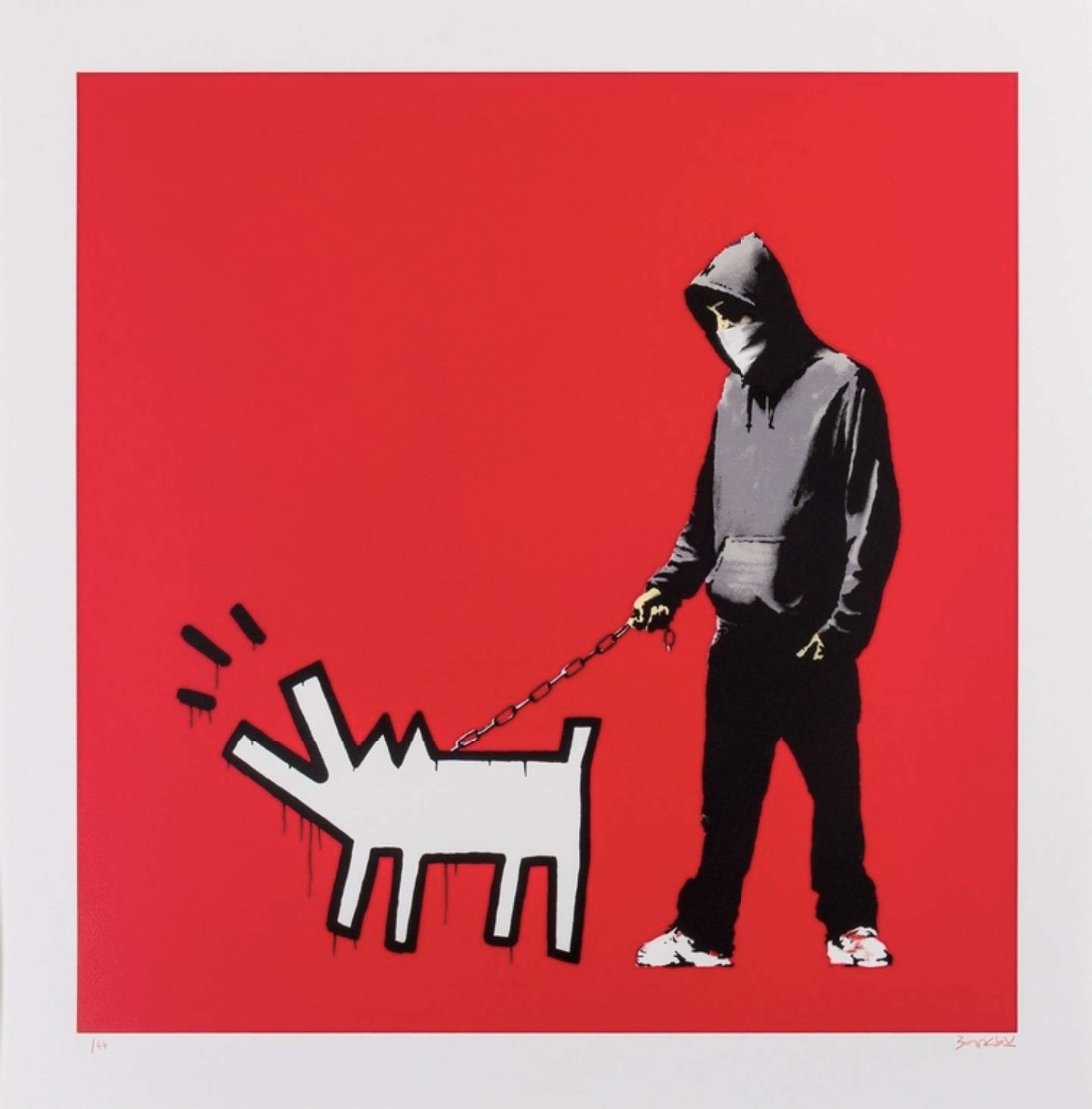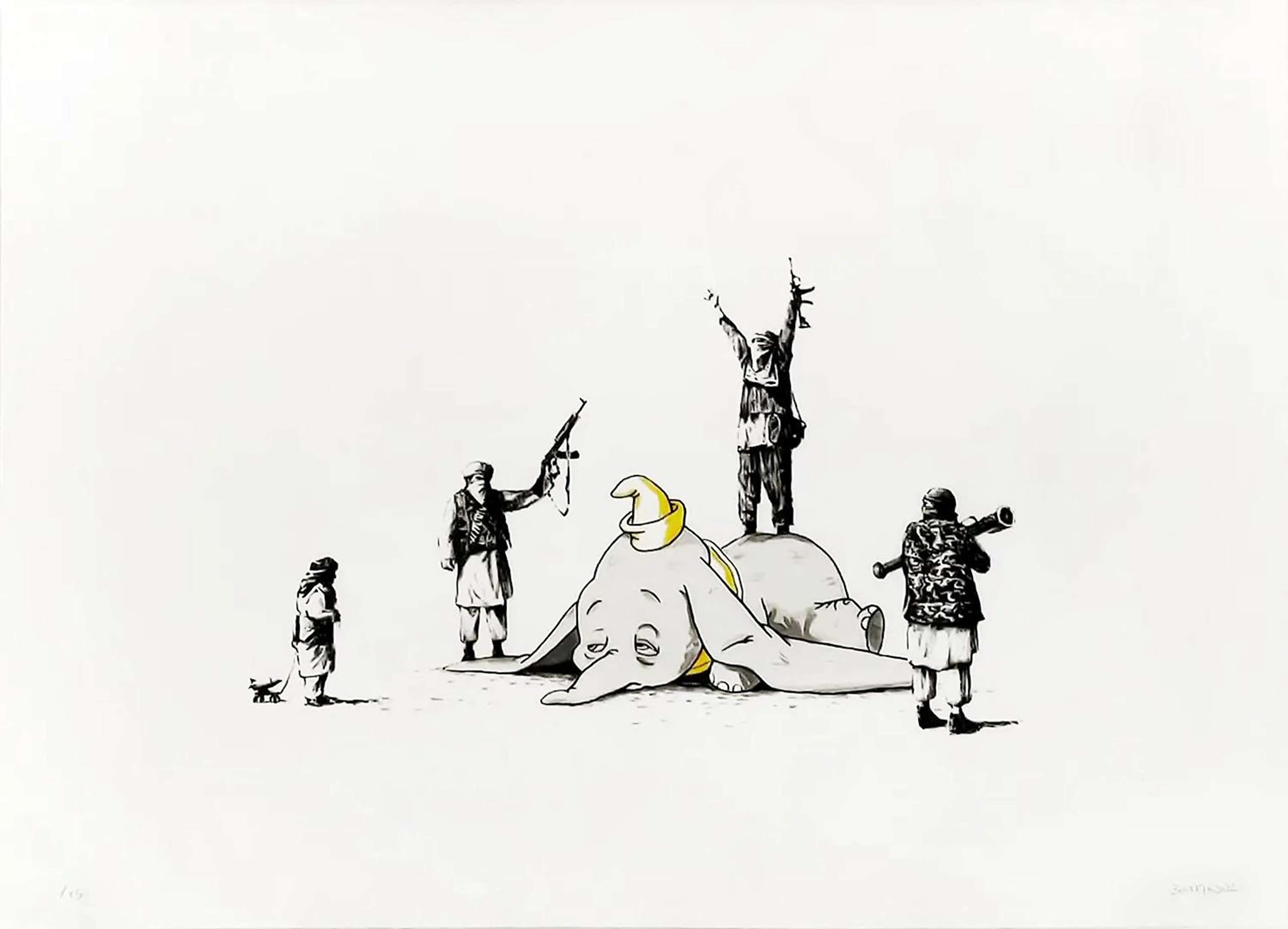Banksy's London Zoo: New Animal Murals Across the City

 A Map of Banksy’s London Zoo (last updated 11th August 2024) © MyArtBroker 2024
A Map of Banksy’s London Zoo (last updated 11th August 2024) © MyArtBroker 2024
Banksy
269 works
Banksy has returned to London with a swathe of activity, creating a series of animal spray paint works across the city. Starting in Kew Bridge in Richmond and making their way southeast to Peckham, these works have sent Banksy fans and street art enthusiasts on a quest to decipher their meaning. Cryptic as ever however, Banksy is confirming nor denying a thing.
Since Monday 5th August, Banksy has been announcing the animal murals at precisely 13:00 on his Instagram without captions or commentary - leaving their meaning totally up to the interpretation of the viewer. Thus far, the animal artworks have charted a line from Richmond in West London to Peckham in South East. While we initially surmised that the artworks might be appearing in a calculated sequence, with one goat appearing on Monday, two elephants on Tuesday, and three monkeys on Wednesday, this theory was debunked with a lone wolf being announced on Thursday 8th. The works have been subject to much debate; the reason behind the choice of animals and their locations as of yet unknown.
Here are Banksy’s London animal murals in order of appearance so far:
 Banksy’s Mountain Goat, Kew Bridge © Banksy 2024
Banksy’s Mountain Goat, Kew Bridge © Banksy 2024Banksy’s Mountain Goat (or Gazelle), Kew Bridge (Richmond), Monday 5th August
The first spray painted animal in this series appeared on Monday 5th August. A solitary mountain goat (or gazelle) appeared on a building at the end of Kew Bridge, teetering precariously on the edge with a surveillance camera watching its struggle. At this point, no one anticipated that the goat would be the impetus behind a new series. Theories on this work were diverse, from the political to the self-indulgent. Some believed the goat in distress to be a symbol for society on the brink of collapse. Some thought it wasn’t a goat at all, instead believing it to be a Palestinian gazelle, a species facing threats of extinction. Others took the subject at face value, assuming it to be Banksy’s self-proclamation as the “GOAT” (Greatest Of All Time) of Street Art.
 Banksy’s Elephants, Edith Terrace © Banksy 2024
Banksy’s Elephants, Edith Terrace © Banksy 2024Banksy’s Elephants, Edith Terrace (Chelsea), Tuesday 6th August
Just as crowds were swarming around the Kew Bridge goat, Banksy took to his Instagram the following day to announce his second London spray of the week: two elephants in Edith Terrace. The two elephants are sprayed on boarded windows on the side of a Chelsea townhouse, extending their trunks towards one another with a hopeful gesture of meeting in the middle. Once again, this post came with no caption or insight from the artist himself on what it might mean, but Banksy left us deciphering what the “elephants in the room” might be.
 Banksy’s Monkeys, Brick Lane © Banksy 2024
Banksy’s Monkeys, Brick Lane © Banksy 2024Banksy’s Monkeys, Brick Lane (Tower Hamlets), Wednesday 7th August
On 7th August, Banksy announced his third instalment in the series: this time three monkeys swinging across a rail bridge on Brick Lane. Monkeys are one of Banksy’s most prolific and repeated motifs. However, these are not the chimpanzees were accustomed to seeing in Banksy’s oeuvre, making them a standout in this particular series. Thanks to their appearance as a three, many thought the monkeys to be an allusion to the age-old proverb: “see no evil, speak no evil, see no evil”. It was at this point in the genesis of the series that people began to draw links between the three works, seeing their numbers grow in correlation to the day of the project.
 Banksy’s Lone Wolf, Rye Lane © Banksy 2024
Banksy’s Lone Wolf, Rye Lane © Banksy 2024Banksy’s Lone Wolf, Rye Lane (Peckham), Thursday 8th August
Despite many anticipating a group of four animals in his next work, Banksy emerged in Peckham with a lone wolf sprayed onto a satellite dish above a Rye Lane shop. Giving the impression of a wolf silhouetted by the light of the moon, this particular work was a showcase of Banksy’s aptitude to turn found objects into carefully conceived artworks. The choice of a singular wolf seems to follow a narrative being constructed by all the animals thus far. As our Banksy Specialist Helena Poole commented: “Perhaps Banksy feels like the lone wolf, howling at the moon whilst governments fail to do anything about wider issues.” Within an hour of the work being announced however, three masked individuals were filmed prising it off the building’s roof and stealing the howling wolf from its rightful place.
 Banksy’s Pelicans, Walthamstow © Banksy 2024
Banksy’s Pelicans, Walthamstow © Banksy 2024Banksy’s Pelicans, Pretioria Ave (Walthamstow), Friday 9th August
This time, two pelicans were sprayed onto commercial premises, incorporating the sign from a fish and chip shop to complete the work - showing two pelicans feasting on fish.
This was the first work to be so heavily published before Bansky's official claim to the work - with many on Instagram and other social channels posting about it from as early as 8 am on Friday 9th August. The London public were suddenly alert for all potential Banksy works.
 Banksy’s Black Panther, Edgware Road © Banksy 2024
Banksy’s Black Panther, Edgware Road © Banksy 2024Banksy’s Black Panther, Edgware Road, Saturday 10th August
Another work that was found before the official claim of ownership, this time Banksy bought a black panther, or big cat, to a disused billboard on Edgware Road near Cricklewood in London.
The work incorporates its surroundings, as if the big cat has damaged its captivity trying to escape the chain that's shown around its neck.
 Banksy’s Piranhas, Ludgate Hill © Banksy 2024
Banksy’s Piranhas, Ludgate Hill © Banksy 2024Banksy’s School of Piranhas, Ludgate Hill, Sunday 11th August
The seventh work from Banksy shows a school of piranhas in a police box in Ludgate Hill, London.
It's currently the most interactive of all the works in this series.
 Banksy's Rhinocerous, Westmoor Street, Charlton © Banksy 2024
Banksy's Rhinocerous, Westmoor Street, Charlton © Banksy 2024 Banksy's Rhinoceros, Westmoor Street, Charlton, Monday 12th August
Banksy is keeping the art world and enthusiasts talking with his latest work in the London Zoo series. Over the weekend, he revealed two additional works, and today, his most detailed piece yet: a large rhinoceros perched on top of a silver Nissan Micra, complete with a matching traffic cone on the car’s hood. This detailed artwork seems to playfully respond to criticism of the simple black stencil style in the other works from this series. The rhinoceros is Banksy's eighth piece in the series, adding to the ongoing excitement.
 Banksy's Gorilla, London Zoo © Banksy 2024
Banksy's Gorilla, London Zoo © Banksy 2024Banksy's Gorilla, London Zoo, Tuesday 13th August
After nine days of anticipation, Banksy kept his fans on edge by unveiling the ninth instalment of his so-called London Zoo series. This piece features a spray-painted gorilla on the security shutters of the London Zoo itself, depicted as releasing birds, a sea lion, and other animals from beneath a blanketed tarp. Unlike the previous works in the series, this one stands out as the largest yet, was announced earlier, at 9:30 A.M., via the artist's Instagram, and its location feels particularly significant in the context of the entire series.
The piece has been met with excitement and praise, with a London Zoo spokesperson telling the BBC it was “an honour” and “absolutely brilliant.” Crowds have already gathered to take photographs, and the artwork is currently cordoned off for protection.
As with all of Banksy's works, nothing is coincidental, and timing is crucial. From the outset of this series, there has been speculation that Banksy might be addressing the nationwide riots in the UK, the ongoing Israel/Palestine conflict, or perhaps something else entirely. The key point is that Banksy is once again using his art to spark conversation. However, given the transient nature of street art, some pieces have faced unfortunate fates. For instance, the lone wolf depicted on a satellite dish was predictably and shamelessly stolen just hours after it was discovered. The eighth instalment, featuring a rhinoceros mounting a Nissan Micra, was crudely defaced by a man in a balaclava with white spray paint.
In other cases, protection orders have been issued: the sixth instalment, a wildcat on a billboard, was removed by contractors fearing it would be torn down. According to ArtNews, it was stored in a contractor's yard awaiting potential collection. Similarly, the seventh instalment, depicting piranhas on a police sentry box in the City of London, was relocated to Guildhall Yard for safekeeping and preservation, according to The Art Newspaper.
Whether this ninth instalment is the final piece remains to be seen, but its placement at the London Zoo seems to encapsulate the overarching theme of the series. It brings awareness to broader issues while also offering a touch of humour amid the harsh realities of elections, economic and geopolitical turmoil. Banksy urges viewers to confront these pressing issues head-on, rather than shy away from them.
The power of Banksy lies in his ability to get us talking. No one really knows what these works mean (yet), and the artist is unlikely to confirm or deny any theories. However, the most important thing is that his art is urging us to confront the most pressing socio-political issues of our time, something Banksy has always - and will always - use his art to do.




